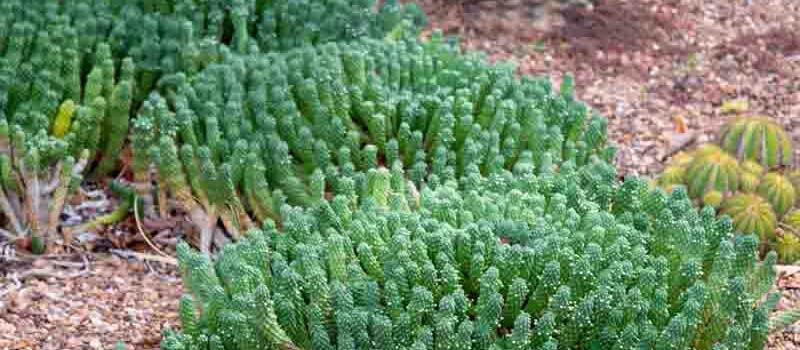
Молочай головчатый (Голова Медузы): Все, что вам нужно знать (Euphorbia caput-medusae (Medusa’s Head): All You Need to Know)
Euphorbia caput-medusae (Medusa’s Head): All You Need to Know
Euphorbia caput-medusae, commonly known as Medusa’s Head, is a fascinating succulent native to South Africa. This unique plant is part of the Euphorbiaceae family and is known for its extraordinary appearance and low maintenance requirements.
Characteristics
Medusa’s Head has several distinct features that make it a popular choice for succulent enthusiasts:
- Shape: The plant has a rosette shape, with numerous long, snake-like stems that can twist and curl, resembling the hair of Medusa from Greek mythology.
- Color: The stems are typically green with a hint of gray, and they can develop a waxy texture that helps reduce water loss.
- Flowers: Euphorbia caput-medusae produces small, yellow flowers that appear in the spring and summer, adding a pop of color to the plant.
Cultivation
Growing Medusa’s Head is relatively easy, making it suitable for both beginners and experienced gardeners:
- Soil: Use well-draining soil, ideally a cactus or succulent mix.
- Light: Place the plant in a location with bright, indirect sunlight. Too much direct sun can scorch the leaves.
- Watering: Water sparingly; allow the soil to dry completely between waterings to prevent root rot.
- Temperature: Medusa’s Head prefers warm temperatures and should be protected from frost.
Propagation
Propagation of Euphorbia caput-medusae can be done through cuttings:
- Cuttings: Take healthy stem cuttings and allow them to callus for a few days before planting them in soil.
- Seeds: Seed propagation is less common but can be achieved with patience.
Care Tips
To keep your Medusa’s Head healthy, follow these care tips:
- Pests: Watch for mealybugs and spider mites; treat them promptly if they appear.
- Fertilization: Use a diluted cactus fertilizer during the growing season to promote healthy growth.
- Container: If growing in a pot, ensure it has drainage holes to avoid water accumulation.
Conclusion
Euphorbia caput-medusae is an intriguing addition to any succulent collection. With its unique appearance and easy care requirements, it's perfect for gardeners looking to add a touch of the exotic to their homes.
Отзывы
Требования
- Тип растения:
- Семейство: Euphorbiaceae
- Род: Euphorbia
- Освещенность: Полное солнце, Частичное Солнце
- Сезон: Весна (Раннее, Среднее, Позднее) Лето (Раннее, Среднее, Позднее) Осень Winter
- Высота: 10см - 20см
- Распространение: 30см - 90см
- Расстояние: 30см - 90см
- Обслуживание: Минимум
- Потребность в воде: Минимум
- Тип почвы: Суглинистая, Песчаная
- pH почвы: Кислая, Нейтральная, Щелочная
- Дренаж почвы: Хорошо дренированная почва
- Дополнительные характеристики: Эффектный, Вечнозеленый
- Терпимость: Засуха, Сухая почва, Олень, Кролик, Соль
- Использование в саду: Подвесные корзины, Внутренний дворик и контейнеры
Народный рейтинг
- Эстетическая привлекательность:
- Уход и непритязательность:
- Устойчивость к климату:
- Здоровье и устойчивость к болезням:
- Полезность: